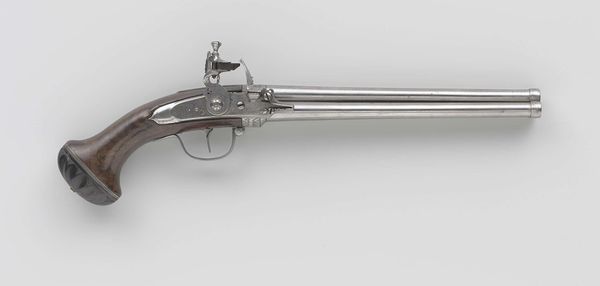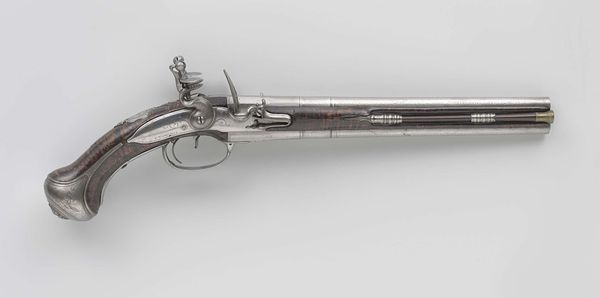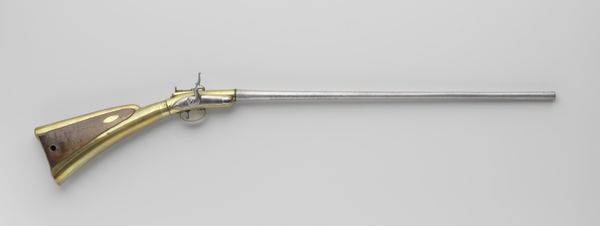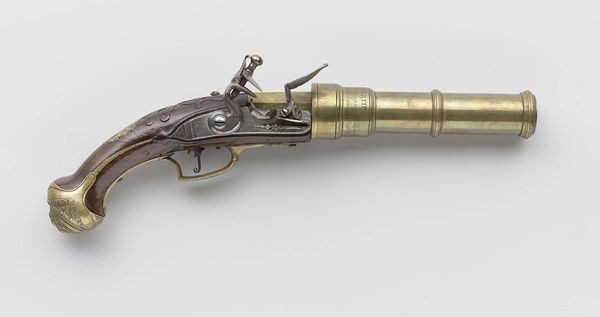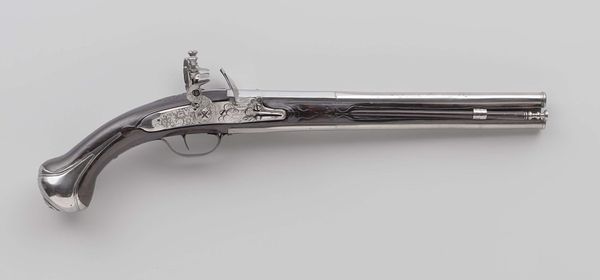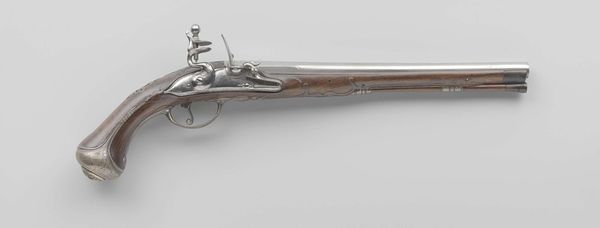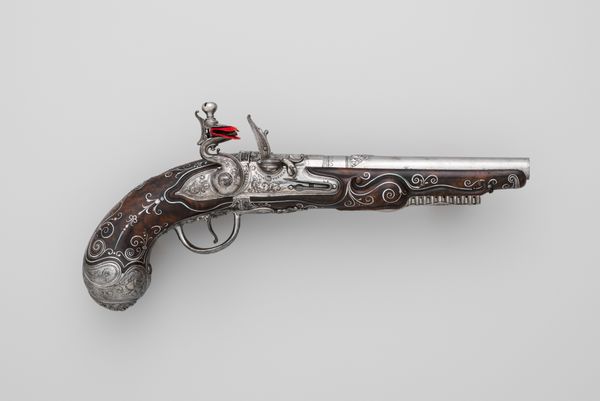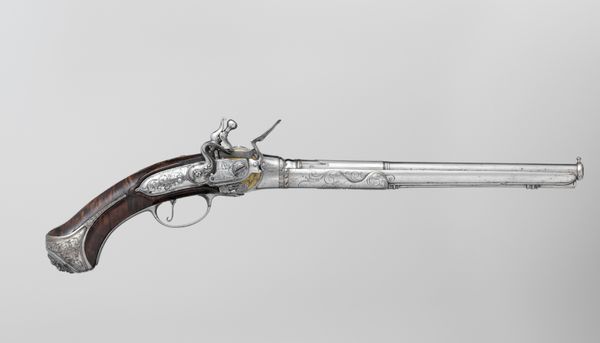
metal, wood
#
baroque
#
metal
#
wood
Dimensions: length 48 cm, length 30.6 cm, diameter 13.8 mm, weight 1121 gr
Copyright: Rijks Museum: Open Domain
Curator: Here at the Rijksmuseum we have an early 18th-century flintlock pistol by P. Boudson, crafted around 1705 to 1710. Made from wood and metal, it exemplifies the Baroque aesthetic even in a functional object. What's your initial reaction? Editor: Well, apart from the obvious implications, the overwhelming sensation is elegance. The sinuous curves, the polished sheen of the metal...it almost belies its violent purpose. The craftsmanship speaks volumes, it projects confidence and control. Curator: Precisely! It embodies the Baroque love of ornamentation and the desire to elevate everyday objects into works of art. Consider the stock of the pistol – the carved wooden handle isn't merely functional; it's an opportunity for artistic expression. Its mere form suggests cultural continuity from antiquity. Editor: I see how the maker integrated complex aesthetic patterns into functional space. Notice the engraved floral patterns? How might the cultural memory surrounding flower motifs influence perceptions of status, control, even beauty in this otherwise weapon? Curator: The Baroque period thrived on such visual vocabulary, especially so here in this particular cultural sphere. Owning such a piece communicated more than simple self-defense. It alluded to notions of power, wealth and good taste. It transforms the bearer into an instant representation of wealth and social position. Editor: Let's not forget, though, the inherent contradictions here: A beautiful object designed for violence. Does its artistic quality somehow normalize or glorify the act it's meant to facilitate? The metal suggests brutal force while its gilded form promises luxury. Curator: An excellent point. And remember this object was more than simply metal and wood. It's inextricably tied to European Colonial history. To possessing land by means of force. The psychology behind how this seemingly innocent item affected nations will forever be up for debate. Editor: Thank you for that enlightening background. The juxtaposition of artistry and utility now seems more jarring than ever. Curator: And thanks to you, for a new and vital understanding. It’s essential to understand the cultural contexts that shaped it.
Comments
No comments
Be the first to comment and join the conversation on the ultimate creative platform.
